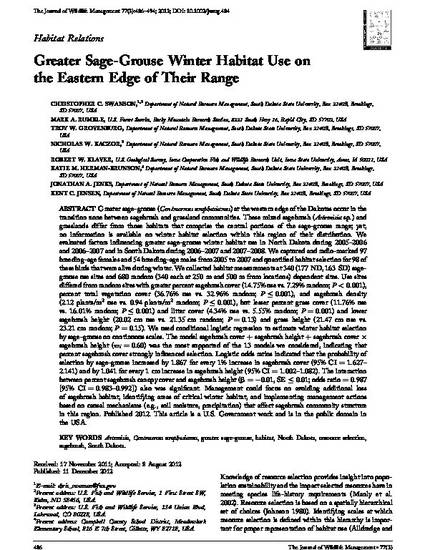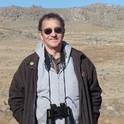
Article
Greater sage-grouse winter habitat use on the eastern edge of their range
The Journal of Wildlife Management
(2013)
Abstract
Greater sage-grouse (Centrocercus urophasianus) at the western edge of the Dakotas occur in the transition zone between sagebrush and grassland communities. These mixed sagebrush (Artemisia sp.) and grasslands differ from those habitats that comprise the central portions of the sage-grouse range; yet, no information is available on winter habitat selection within this region of their distribution. We evaluated factors influencing greater sage-grouse winter habitat use in North Dakota during 2005-2006 and 2006-2007 and in South Dakota during 2006-2007 and 2007-2008. We captured and radio-marked 97 breeding-age females and 54 breeding-age males from 2005 to 2007 and quantified habitat selection for 98 of these birds that were alive during winter.We collected habitat measurements at 340 (177 ND, 163 SD) sagegrouse use sites and 680 random (340 each at 250 m and 500 m from locations) dependent sites.
Disciplines
Publication Date
2013
Citation Information
Swanson, Christopher C.; Rumble, Mark A.; Kaczor, Nicholas W.; Klaver, Robert W.; Herman-Brunson, Katie M.; Jenks, Jonathan A.; Jensen, Kent C. 2013. Greater sage-grouse winter habitat use on the eastern edge of their range. The Journal of Wildlife Management. 77(3): 486-494.
